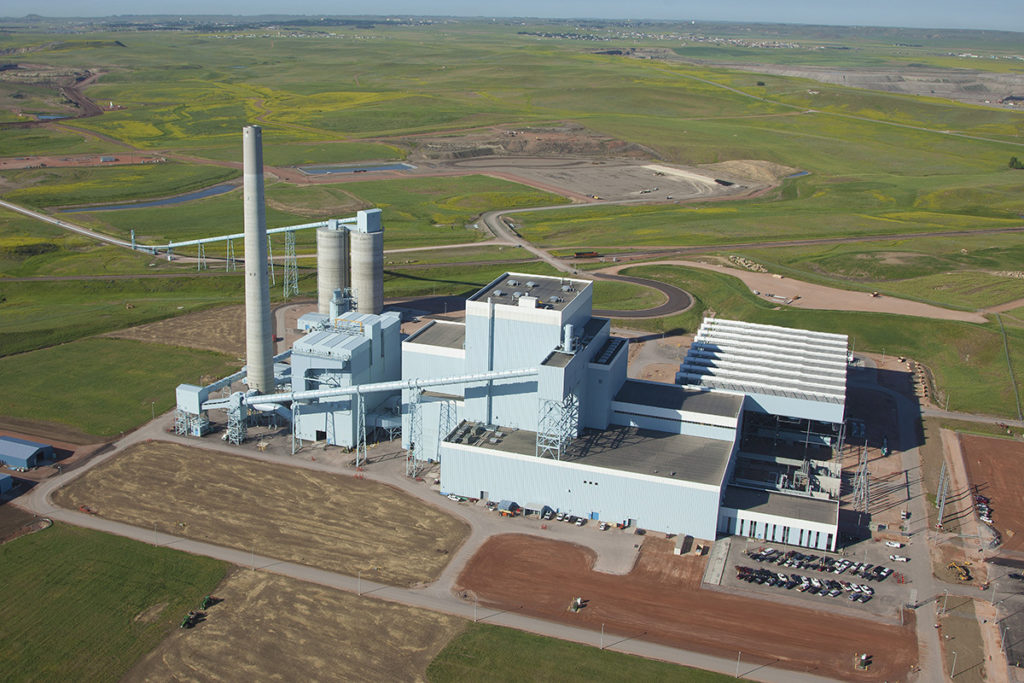
Members of a key Senate panel traveled to Wyoming this month for a field hearing on how co-op-supported research could turn carbon dioxide emissions into useful products.
“Wyoming is the leading coal producer in the nation,” said Sen. John Barrasso, R-Wyo., chairman of the Environment and Public Works Committee, at the hearing. “Coal creates good-paying jobs for the people of Wyoming and keeps lights on for the whole country.”
The hearing was held Aug. 19 at Bismarck, North Dakota-based Basin Electric Power Cooperative’s Dry Fork Station in Gillette, Wyoming. The G&T’s power plant is home to the Wyoming Integrated Test Center, a 109,000-square-foot facility built and designed to provide industrial-scale testing of new technologies using CO2 as a feed stock.
Since 2014, the state of Wyoming has worked with Basin Electric, Denver-based Tri-State Generation and Transmission Association, NRECA and other academic and industrial interests to help develop a solid future for coal, which remains the nation’s most abundant energy resource.
“It is more important than ever that Wyoming and the federal government work together with our universities and with the private sector to invest in technology innovation,” said Sen. Mike Enzi, R-Wyo. “We can utilize [coal] or we can pass it over.”
The senators heard from witnesses supporting efforts to bring academic and research projects to the facility, which captures and directs CO2 from flue gas produced by the power plant to test bays. The compounds can be processed on site and used for industrial scale production of new or improved products and compounds.
“While developers have tested larger projects in the U.S., this is the only dedicated testing site that can host larger pilot and demonstration projects,” said Jason Begger, managing director of the Wyoming ITC.
“It takes years to move through funding opportunities, design, fabrication and testing,” Begger said, adding that sustained funding and policy support from the Department of Energy is key to advancing the research.
“Our testing partners need to know that they’ll have the resources they need to methodically scale up and provide the types of technical assurances utilities need to feel comfortable commercializing the technologies,” he said.
The ITC is one of two North American host sites that are finalists for the NRG COSIA Carbon XPRIZE, a $20 million global competition to encourage new uses for CO2.
“Carbotech presents an opportunity to generate revenue by harvesting a low-value carbon dioxide feedstock and transforming it into a high-value product,” testified Marcius Extavour, executive director of the NRG COSIA Carbon XPRIZE. “The ITC was designed to support exactly this kind of innovation.”
Researchers are using the facility to test new and more efficient ways to produce building and fabrication materials, fuel stocks, and industrial compounds used in food and beverage processing. The winner of the competition will be selected from 10 finalists and announced in early 2021.
The Senate hearing also featured support for the Utilizing Significant Emissions with Innovative Technologies—or USE IT Act. The bill, which would speed federal approval for carbon capture, utilization, and storage efforts, passed the Senate earlier this year as part of the sweeping National Defense Authorization Act. The House did not include the USE IT Act in its version of the defense bill, but senators plan to press for it as part of a final compromise.
Derrill Holly is a staff writer at NRECA.